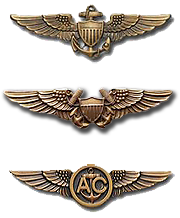Typhoon - 1945

In September 1945, VP-205 was flying PBM5s out of Buckner Bay while being based aboard the sea plane tender USS. ST. GEORGE (AV-16).
On September 15th our crew was scheduled for the night patrol with the knowledge that a typhoon was due in the area the following noon. We took off at 1800 hours and at midnight we received a message that the typhoon was arriving early and for us to return at first light to refuel for a flyaway to the Philippines.
We returned to base at dawn and saw the rough waters that were whipped into a series of white caps. We made the full stall landing, but, because of violent turbulence, we became airborne two more times, so we hit the water three times instead of once. While taxiing on the more than choppy waters, I soon learned that you did not or could not make a 180 degree turn in order to reverse your direction. All you had to do was let the gale force winds (it was not yet a full-blown typhoon) blow you backward. I found trying to turn only resulted in the wing float becoming completely submerged up to the wing tip.
While being refueled, our plexiglas bow was smashed by the stern of the refueling ship because they had drawn us too close. Some of our planes did manage to become airborne, but then, others could not and the Captain halted further attempts. A relief crew came in a large rubber doughnut to take over from us as we had been aboard the plane close to 14 hours and our chow was gone and little water remained. We were taken back to St. George and climbed a cargo net to get aboard.
Shortly after coming aboard, I climbed into my bunk looking for sleep. However, within a short time, maybe two hours, I was awakened because my head was hitting the bulkhead on virtually every pitch and roll of the ship.
We went out to sea and rode the storm out, but not before going through the eye of the typhoon. The anemometer broke at 125 knots and the mountainous waves were unbelievable. As our 500-foot ship reached the top of each huge wave, the screws came out of the water, causing the ship to shudder before its next downward descent. The next morning I found out that the ship had no steering control during the height of the storm.
While playing cards in the Officer’s Wardroom, Warrant Officer Tony Tekins was dealing and he dealt the cards up into the air as his chair went over backward until it hit the deck, landing him flat on his back. Meanwhile, dishes in the galley continued to fall out of their racks and smash to the deck with each roll of the ship.
One PBM was lashed to the fantail and after the storm subsided, the fuselage remained in place but its wings had been torn off. It was then pushed off the stern and the ship’s guns helped sink it.
Our ship spotted a shipwreck survivor astride a mast segment. He had survived the ordeal holding on to a piece of wreckage! We stood by so a smaller ship could affect his rescue. It was very rewarding to see the blinker from the rescue ship flashing his gratitude to our ship for saving his life.
The St. George was built by the Todd-Bremerton Shipyards in Washington with the capacity to endure a 35- degree roll. Since we had been rolling at a 37-degree angle during the storm, my eternal gratitude goes to that firm for building a little extra into it.
Send questions, comments or suggestions regarding this website to: vp45assoc@vp45association.org
Copyright © 2005 PATRON FOUR FIVE ASSOCIATION


